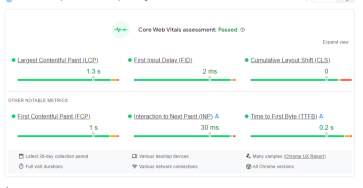Largest Contentful Paint (LCP) is a key performance metric for web pages, measuring the time it takes for the largest…
lazy loading
Lazy loading is a design pattern in programming that defers the loading or initialization of an object until it is actually needed. This can significantly enhance performance and system efficiency, particularly in applications that handle large volumes of data or content.
In a typical application without lazy loading, all objects might be loaded into memory when the application starts, consuming valuable resources and possibly slowing down the system. With lazy loading, only the necessary objects are loaded, freeing up resources for other tasks.
Lazy loading can be applied to different aspects of a system, such as images on a webpage or large data sets in a software application. In web development, lazy loading images means that the images will only be loaded when they are about to be displayed on the user’s viewport. This improves page load times and reduces unnecessary bandwidth consumption, especially beneficial for users with slow internet connections or limited data plans.
In software design, lazy loading might be applied to database queries, where large data sets are only queried and retrieved when needed. This can prevent the application from becoming bogged down by loading massive amounts of data that may never be used.
While lazy loading has many advantages, it’s not without challenges. Proper implementation is crucial to avoid potential pitfalls like broken user experiences or increased complexity in code management. Monitoring the loading process and understanding when and how to load resources requires careful consideration and planning.
Moreover, lazy loading might not be suitable for all scenarios. In some real-time applications, where immediate access to all data or elements is required, lazy loading could introduce unacceptable delays.
In conclusion, lazy loading is an optimization technique that can significantly enhance performance by loading resources only when necessary. It’s widely used across various domains, from web development to software engineering, offering benefits in system responsiveness and resource management. But its successful implementation requires thoughtful design and awareness of the specific use case to avoid potential challenges.
